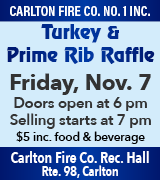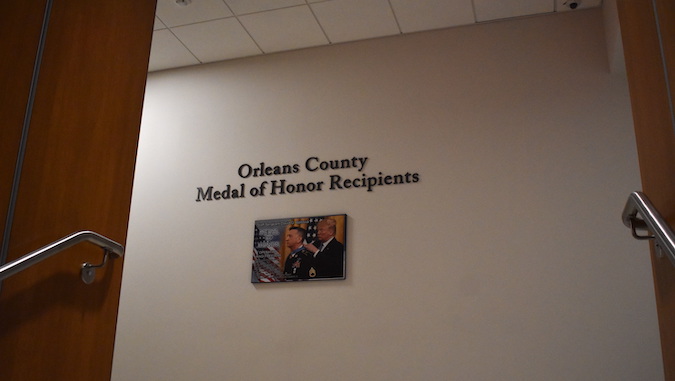Editorial: It’s taken too long to include all Medal of Honor recipients in county office building display
ALBION – The Orleans County Legislature nearly two years ago unveiled a wall for Medal of Honor recipients from the county. On the day of the unveiling only one of the five recipients was included: David Bellavia. He received his medal on June 26, 2019 at the White House from President Donald Trump.
Bellavia is the first living veteran from the Iraq War to receive the nation’s highest military medal. He was honored for his acts of valor on Nov. 10, 2004 in Fallujah, Iraq. Bellavia led an infantry squad clearing houses of insurgents, saving the lives of the members of his unit.
Four others in the county also have received the prestigious medal. County officials at the time of the wall’s debut said they wanted to coordinate with the families of the other recipients about a public recognition for those honorees. It’s been nearly two years and still only Bellavia is on the wall.

David Bellavia, a Lyndonville native, was joined by many high-raking officials, including former Congressman Chris Jacobs, when the wall for Medal of Honor recipients was unveiled nearly two years ago.
County officials should move fast to get the other Medal of Honor recipients on the wall. It’s long overdue. A public recognition program could happen close to Memorial Day in May. It would be ideal to have descendants of the honorees there, but the county shouldn’t push this off in perpetuity if relatives can’t be tracked down.
The wall should include all five honorees, dating back to 1869. The current display is a slight to the other recipients and the public.
Former Orleans County Historian Matthew Ballard researched the four other Medal of Honor recipients from Orleans County. He shared the following details in previous columns and presentations when he was historian:
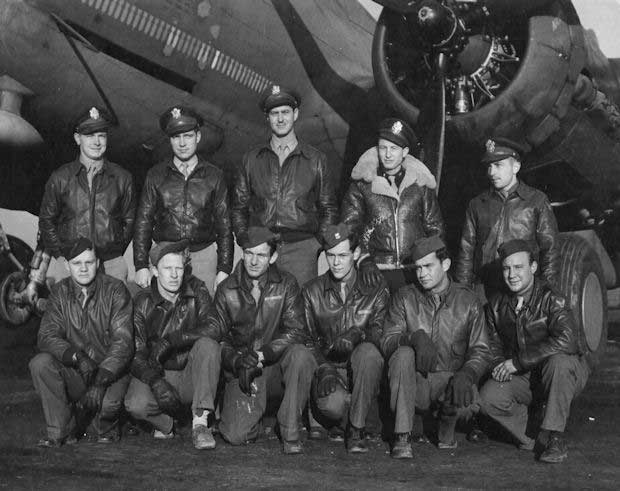
Pictured include from left, in front: SSgt. William Simpkins, Jr., Sgt. George Buske, Sgt. Stanley Moody, TSgt. Forrest Vosler, Sgt. Ralph Burkart, and Sgt. Edward Ruppel. Back row: Capt. Merle Hungerford, 2Lt. Walter Ames, 2Lt. John Henderson, 2Lt. Woodrow Monkres, and 2Lt. Warren Wiggins.
• Forrest Vosler of Lyndonville was assigned as a radio operator and aerial gunner aboard a B-17 Flying Fortress during World War II with the 358th Bombardment Squadron, 303rd Bombardment Group stationed out of England. On Dec. 20, 1943, Vosler’s fourth combat mission. The plane was under fire and had two engines knocked out with the aircraft windmilling out of control.
When a fellow aviator was knocked unconscious, Vosler maneuvered himself into the tailgun. Another 20-mm shell hit the aircraft, sending shrapnel into Vosler’s chest, face, and eyes. He continued to deliver defensive fire upon German aircraft until the attacks subsided. Nearly out of fuel and losing altitude quickly, the crew jettisoned every piece of equipment to lighten the plane.
Vosler, severely wounded and floating in and out of consciousness, begged the crew to throw him out of the plane to reduce weight. As the aircraft plunged into the frigid waters of the North Sea, Vosler crawled out of the aircraft onto a wing. A passing Norwegian trawler quickly picked up the crew and transferred them to a British rescue vessel. One of Vosler’s eyes had one of his to be removed, and the other required extensive surgery.
• John E. Butts of Medina is the only one of the five Medal of Honor recipients from Orleans County who received the honor posthumously. He was recognized for his heroic actions near Cape La Hague, France in World War II.
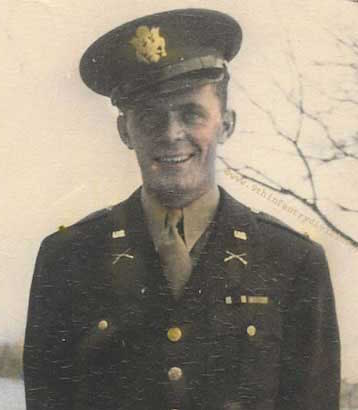
John Butts was awarded the Medal of Honor for acts of valor in the Normandy invasion in June 1944.
Butts was in command of four squads in Easy Company of the 60th Infantry Regiment, 2nd Battalion, 9th Infantry Division charged with driving towards St. Colombe, France. On June 12, 1944, 2nd Battalion progressed so quickly towards their objective that the remainder of 9th Division thought the 60th Infantry was lost. In fact, 2nd Battalion had pushed forward through heavy German resistance and established a bridgehead at the Douve River. Butts was wounded twice, first near Orglandes on June 14th and then at the Douve River just two days later; he refused medical treatment on both occasions in order to remain with his men.
On June 23, 1944, the 60th Infantry led the 9th Division’s advance from the Cotentin Peninsula as part of the breakout from St. Lo. While moving towards Flottemanville-Hague, Butts and his men encountered a German stronghold atop a hill, well defended with tanks, machine guns, and mortars. Butts was struck in the stomach by machine gun fire while progressing towards the objective. Pulling himself into the shelter of a nearby hedgerow, he planned a flanking maneuver with his Sergeants.
One squad was to progress up the left flank, another up the right flank, and the third was to remain in reserve. Holding one hand over his midsection and the other grasping his carbine, Butts charged the hill alone. The might of the entire German stronghold fell upon him directly, Butts falling approximately 10 yards from his objective. The distraction allowed the two flanking squads to outmaneuver the Germans while the third squad hit the hill head-on.
Awarded on July 19, 1945 by President Harry Truman, John Butts’ Medal of Honor citation references the two painful wounds he received in the days leading up to the deadly assault on June 23, 1944. His citation concluded by stating, “By his superb courage, unflinching valor and inspiring actions, 2d Lt. Butts enabled his platoon to take a formidable strong point and contributed greatly to the success of his battalion’s mission,” President Harry Truman said in the citation for the medal, which was awarded on July 19, 1945.
• Thomas Wilbur Kates, born in Shelby on May 7, 1865, received the Medal of Honor for his actions in 1900 during the Boxer Rebellion, a nearly two-year uprising led by the Yihetuan (or Boxers) against foreign imperialists in China.
Kates accepted enlistment with the U.S. Marine Corps at New York City on July 21, 1899. Pvt. Kates and other Marines were dispatched to China on June 18, 1900, where they remained through October 10, 1900. According to his citation, Kates was awarded the Medal of Honor “…for extraordinary heroism while serving with the 1st Regiment (Marines), in action in the presence of the enemy during the advance on Tientsin, China, 21 June 1900. Private Kates distinguished himself by meritorious conduct.”
Maj. Waller wrote in a letter dated July 6, 1900, that “…of the men I wish to say, while all in the engagements we participated in, behaved in such a manner as to bring forth the highest praise from the foreign officers…Cpl. Thomas W. Kates.”
He continued, “…the specifically distinguished of these being Corporal Kates and Privates Campbell and Francis, with the Colt gun.” According to the Report of the Commandant of the U.S. Marine Corps dated September 29, 1900, these three men remained with Lt. Powell, holding a position with an M1895 Colt-Browning Machine Gun until all but Campbell and Powell were gunned down. They destroyed the gun to prevent it from entering enemy hands before they commenced their retreat.
• Charles D. Harris, who fought in the Civil War, was awarded the Medal of Honor for his heroism in the Apache Wars in 1869. The specifics of the engagement and the actions that warranted the awarding of the medal remain shrouded in mystery. After the war, Harris returned to Albion and lived a quiet life until his passing on September 6, 1895. He is buried at Mount Albion Cemetery.
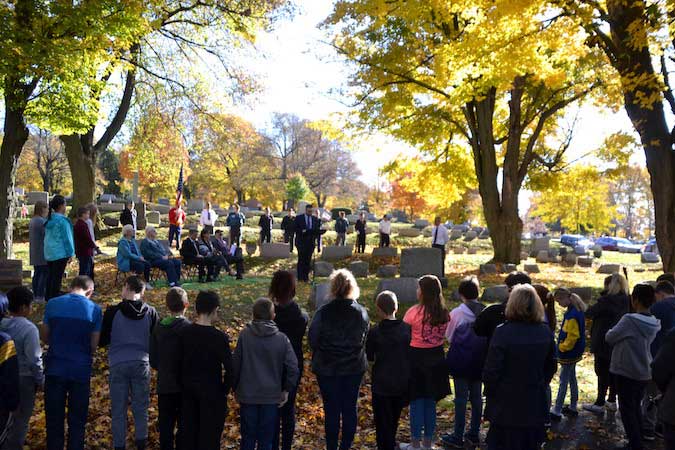
Photo by Tom Rivers: Former Orleans County Historian Matt Ballard speaks on Oct. 29, 2019 during a dedication of a graveside marker for Charles D. Harris. He received a new headstone at Mount Albion Cemetery, following the efforts of the Congressional Medal of Honor Society and the Medal of Honor Historical Society.























